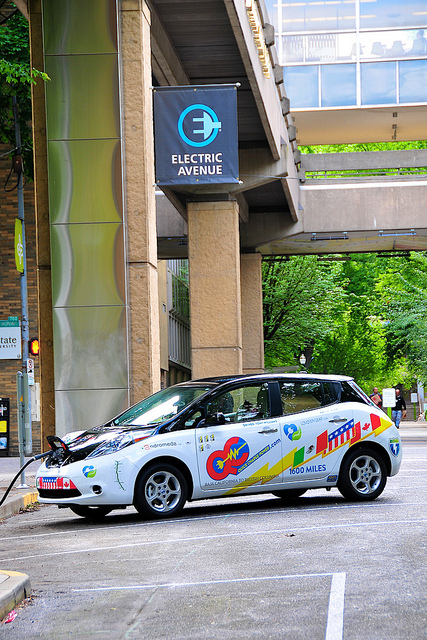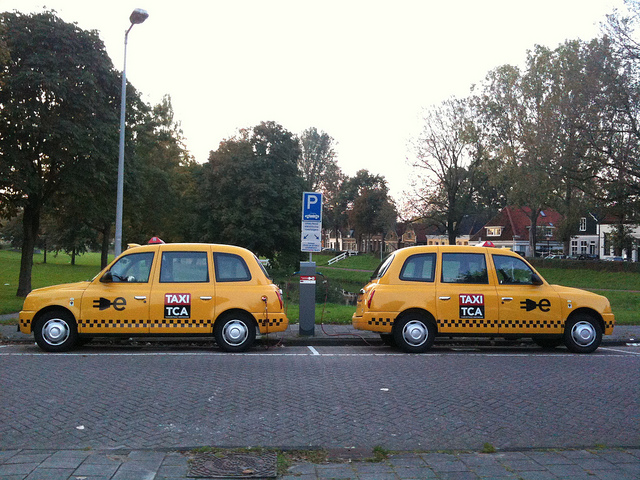|
For an interview with the organizers of IEVE 2015 click here. Click here for a review of the expo and here for another article by author Plamen Mavrov charting the history of the EV. - Ed.
The 2nd International Electric Vehicle Expo (IEVE 2015) at ICC Jeju, Jungmun, was held March 6 to 15 and it put Jeju on the map as a global hotbed for electric vehicle (EV) growth.
It is worth looking at several of the other innovative cities pushing down the same road as Jeju, however, as the fight for EV pole position intensifies.
Read on for an introduction to the unique Zermatt in Switzerland; the mobile Dutch capital, Amsterdam; the progressive Portland in America; and the Goto Islands, the go-to islands for Japanese EV lovers.
| |
 |
|
| ▲ Portland's 'Electric Avenue' is the backbone of its EV infrastructure. Photo courtesy Oregon Dept. of Transport Portland |
PORTLAND: EVs bloom in the Rose City
Portland, home to around 600,000 on the US west coast, is a world leader in progressive action toward reducing greenhouse gas emissions.
The Oregon city signed off its first carbon-reducing legislation in 1989 and followed with other notable accomplishments including the 1993 City of Portland’s Carbon Dioxide Reduction Strategy, the 2005 U.S. Mayors Climate Protection Agreement, and the 2009 Climate Action Plan.
One unique Portland project is “Electric Avenue” in collaboration with Portland General Electric and Portland State University. The International Energy Agency states the downtown area will “showcase the interplay among electric vehicles, charging infrastructure, integrated transit, public greenway space, and urban design.”
Along with micro-development, Portland has also pursued macro-development as it has worked to increase its role on the West Coast Green Highway, an EV corridor of charging stations and related infrastructure connecting Vancouver, Canada, and San Diego, California.
Other notable measures to increase EV use is introducing 12 e-taxis in 2015 and permitting GenZe (of the Indian Mahindra Group) to sell its electric scooters in the city.
| |
 |
|
| ▲ Liek Jeju, the Goto Islands are known for stunning scenery and a growing EV presence. Photo Norio Nakayama |
Goto Islands: “Driving tours of the future”
The International Energy Agency says this small archipelago in Nagasaki Prefecture is one of Japan’s most successful EV zones with an “intelligent transportation system” (ITS) which analyzes and assesses EV “charging infrastructure, effective operating methodologies, and services.”
Goto launched its EV-ITS Consortium in 2009 to revitalize the regional economy — its population has halved over the last 40 years — and the government has stepped up collaboration with local businesses and universities to capitalize on the islands’ booming 200,000 annual visitor tourism industry.
Although just over 150 of its 40,000 registered vehicles are EVs, this jumps to 2,400 if PHEVs (plug-in hybrid electric vehicles) are counted. One of its most successful projects is the car rental service, around 80 percent of which are EVs. There is also a smart-grid project, and information traffic systems linked to the EV charging infrastructure.
| |
 |
|
| ▲ Amsterdam boasts an EV-only fleet of airport-to-city taxis. Photo courtesy Mark Fonseca Rendeiro |
Amsterdam: Driven by the public sector
The Netherlands capital of over 800,000 is widely known for its excellent cycling infrastructure. However, at just 219m² it is ideal for EV development, particularly with the current limits on battery technology.
Accordingly, e-mobility is being placed at the center of its entire ground transportation network particularly since the metropolitan government took the lead in transport innovation following the “Amsterdam Electric” initiative in 2009.
From bicycles to semi-trucks and everything in between, the city seeks to supplant all gas-powered vehicles with EV versions within two decades.
Schemes such as the Car2Go pick-up/drop-off project, generous subsidies to companies, parking permit priority registration for EV drivers, the Real-Time Charging Availability application, and an EV-only fleet of airport-to-city taxis, have made Amsterdam a model to be learned from.
Only six years into its bold initiative, the city has shown great progress can be made with favorable natural and urban conditions, the right incentives, and motivated leadership.
| |
 |
|
| ▲ Zermatt's unique EV's history stretches back over a century. Photo Trey Ratcliff |
Zermatt: The Alpine anomaly
Emergency vehicles are the only gas-powered vehicles in this small southern Swiss resort town. Amazingly this isn’t thanks to recent innovation or forward-thinking policy; the town has been an EV leader for over a century, with combustion models only briefly being introduced in 1910.
Its 6,000 residents and 30,000 annual tourists get around on foot, by one of four horse-drawn carriages, e-taxis, or one of over 500 e-buses operating since 1947; under local law, pedestrians are given strict right-of-way.
Vehicle restrictions are not only for gas-guzzlers. Even private EV ownership is only permitted for commercial purposes.
Visitors make their way into the town via train after leaving their own automobiles at the bottom of the valley. The public vehicles the town provides are unique in that they are all locally produced, powered, and maintained.
In addition, Zermatt’s official website clearly states the government’s very active role in the EV sector.
“Registering an electric bus is subject to a strict licensing procedure. Private trips are not permitted. When their blue lights and sirens are on, the local police are permitted to drive faster, exercising due caution.” |























